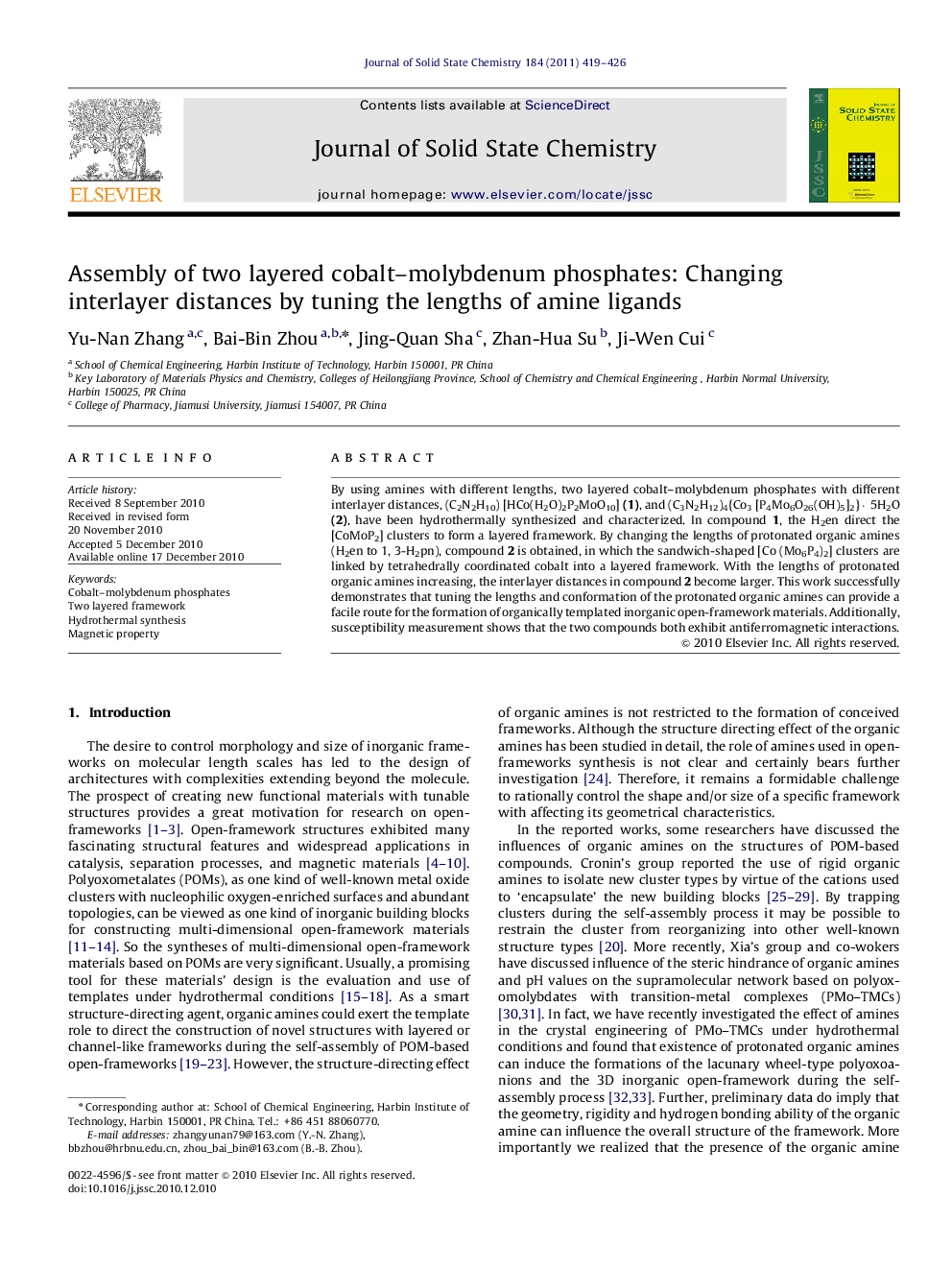| Article ID | Journal | Published Year | Pages | File Type |
|---|---|---|---|---|
| 1331019 | Journal of Solid State Chemistry | 2011 | 8 Pages |
By using amines with different lengths, two layered cobalt–molybdenum phosphates with different interlayer distances, (C2N2H10) [HCo(H2O)2P2MoO10] (1), and (C3N2H12)4{Co3 [P4Mo6O26(OH)5]2}· 5H2O (2), have been hydrothermally synthesized and characterized. In compound 1, the H2en direct the [CoMoP2] clusters to form a layered framework. By changing the lengths of protonated organic amines (H2en to 1, 3-H2pn), compound 2 is obtained, in which the sandwich-shaped [Co (Mo6P4)2] clusters are linked by tetrahedrally coordinated cobalt into a layered framework. With the lengths of protonated organic amines increasing, the interlayer distances in compound 2 become larger. This work successfully demonstrates that tuning the lengths and conformation of the protonated organic amines can provide a facile route for the formation of organically templated inorganic open-framework materials. Additionally, susceptibility measurement shows that the two compounds both exhibit antiferromagnetic interactions.
Graphical abstractBy using amines with different lengths, two layered cobalt–molybdenum phosphates with different interlayer distances have been hydrothermally synthesized.Figure optionsDownload full-size imageDownload as PowerPoint slideResearch highlights► Two layered compounds have been synthesized by utilizing amines with different lengths. ► The chain lengths of amines can influence the overall supramolecular framework of the PMo-TMCs. ► The conformation of amines may influence the stacking mode of the inorganic building blocks. ► Susceptibility measurement shows that the two compounds both exhibit antiferromagnetic interactions.
